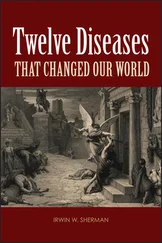If the value for R 0is >1, then the “seeds” of the infection (i.e., the transmission stages) will lead to an ever-expanding spread of the disease—an epidemic or a plague—but in time, as the pool of susceptible individuals is consumed (like fuel in a fire), the epidemic may eventually burn itself out, leaving the population to await a slow replenishment of new susceptible hosts (providing additional fuel) through birth or immigration. Then a new epidemic may be triggered by the introduction of a new parasite or mutation, or there may be a slow oscillation in the number of infections, eventually leading to a persistent low level of disease. If R 0is <1, though, then each infection produces <1 transmission stage and the parasite cannot establish itself.
The economic costs of the outbreak of SARS in 2003 were nearly $100 billion as a result of decreased travel and decreased investment in Southeast Asia. The University of California at Berkeley was so concerned about this epidemic that it put a ban on Asian students planning to enroll for the summer session. The question raised at the outset was: How long will the SARS outbreak last? Calculating the value of R 0provided an answer. Analysis of ~200 cases during the first 10 weeks of the epidemic gave an R 0value of 3.0, meaning that a single infectious case of SARS would infect about three others if control measures were not instituted. This value suggested a low to moderate rate of transmissibility and that hospitalization would block the spread of SARS. The prediction was borne out: transmission rates fell as a result of reductions in population contact rates and improved hospital infection control as well as more rapid hospitalization of suspected (but asymptomatic) individuals. By July of 2003 the R 0value was much smaller than 1, and the ban on Asian students enrolling at the Berkeley campus of the University of California was lifted.
Epidemiologists know that host population density is critical in determining whether a parasite can become established and persist. The threshold value for disease establishment can be obtained by finding the population density for which R 0= 1. In general, the size of the population needed to maintain an infection varies inversely with the transmission efficiency and directly with the death rate (virulence). Thus, virulent parasites, that is, those causing an increased number of deaths, require larger populations to be sustained, whereas parasites with reduced virulence may persist in smaller populations.
Measles, caused by a virus, provides an almost ideal pattern for studying the spread of a disease in a community. The virus is transmitted through the air as a fine mist released through coughing, sneezing, and talking. The virus-laden droplets reach the cells of the upper respiratory tract (nose and throat) and the eyes and then move on to the lower respiratory tract (lungs and bronchi). After infection, the virus multiplies for 2 to 4 days at these sites and then spreads to the lymph nodes, where another round of multiplication occurs. The released viruses invade white blood cells and are carried to all parts of the body using the bloodstream as a waterway. During this time the infected individual shows no signs of disease. But after an incubation period (8 to 12 days), there is fever, weakness, loss of appetite, coughing, a runny nose, and a tearing of the eyes. Virus replication is now in high gear. Up to this point the individual probably believes his or her suffering is a result of a cold or influenza, but when a telltale rash appears—first on the ears and forehead and then spreading over the face, neck, trunk, and to the feet—it is clearly neither influenza nor a common cold. Once a measles infection has begun, there is no treatment to halt the spread of the virus in the body.
Measles passes from one host to another without any intermediary; recovery from a single exposure produces lifelong immunity. As a consequence, measles commonly afflicts children, and for that reason it is called a “childhood disease.” Although measles has been eradicated in the United States because of childhood immunization, it can be responsible for a death rate of ~30% in lesser-developed countries. It is one of the ten most frequent causes of death in the world today. One of the reasons that measles may disappear from a community is immunity that may be the result of natural recovery from an infection or immunization.
The spread of infection from an infected individual through the community can be thought of as a process of diffusion, in which the motions of the individuals are random and movement is from a higher concentration to a lower one. Therefore, factors affecting its spread include the size of the population, those communal activities that serve to bring the susceptible individuals in contact with infectious individuals, the countermeasures used (e.g., quarantine, hospitalization, and immunization), and seasonal patterns. For example, in northern temperate zones, measles spreads most frequently in the winter months because people tend to be confined indoors, while in Iceland, when the spring thaw is followed by a harvest, there are also summer peaks because of communal activities on the farm.
Epidemiologists have as one of their goals the formulation of a testable theory to project the course of future epidemics. It is possible to calculate the critical rate of sexual partner exchange that will allow an STD to spread through a population, i.e., when R 0is >1. For HIV, with a duration of infectiousness of 0.5 year and a transmission probability of 0.2, the partner exchange value is 10 new partners per year. For other STDs, such as untreated syphilis and gonorrhea, with somewhat higher transmission probabilities, the values are 7 and 3, respectively. Despite the development of mathematical equations, predicting the spread of an epidemic can be as uncertain as forecasting when a hurricane, blizzard, or tornado will occur. Indeed, making predictions early in a disease outbreak by fitting simple curves can be misleading because it generally ignores interventions to reduce the contact rate and the probability of transmission. For SARS, fitting an exponential curve to data from Hong Kong obtained between February 21 and April 3, 2003, predicted 71,583 cases 60 days later, but using a linear plot, 2,410 cases were predicted. In fact, by May 30, 2003, according to the WHO, there were >8,200 cases worldwide and >800 deaths. By July 5, 2003, a headline in the New York Times declared “SARS contained, with no more cases in the last 20 days.”
Other uncertainties in predictability may involve changes in travel patterns with contact and risk increased. Sociological changes may also affect the spread of disease—children in school may influence the spread of measles, as occurred in Iceland when villages grew into towns and cities. Quarantine of infected individuals has also been used as a control measure. Generally speaking, quarantine is ineffective, and more often than not it is put in place to reassure the concerned citizens that steps at control are being taken. As is noted above, though, there are other interventions that do affect the spread of disease by reducing the number of susceptible individuals. One of the more effective measures is immunization.
In the year 2015, for some, Disneyland wasn’t the happiest place on Earth. It was in January of that year that a single measles-infected individual was able to spread the disease to 145 people in the United States and a dozen others in Canada and Mexico. Patient zero in the 3-month-old Disneyland outbreak was probably exposed to measles overseas and while contagious unknowingly visited the park. (The measles strain in the Disneyland outbreak was found to be identical to one that spread through the Philippines in 2014, where it sickened ~50,000 and killed 110. It is likely that patient zero acquired the virus there.)
Читать дальше












